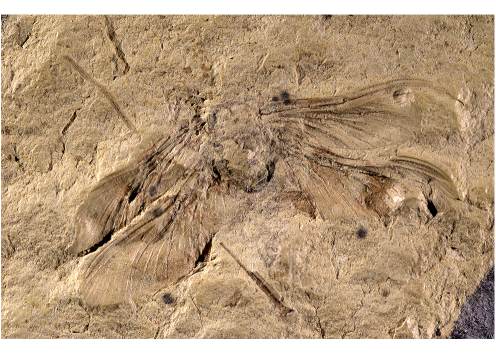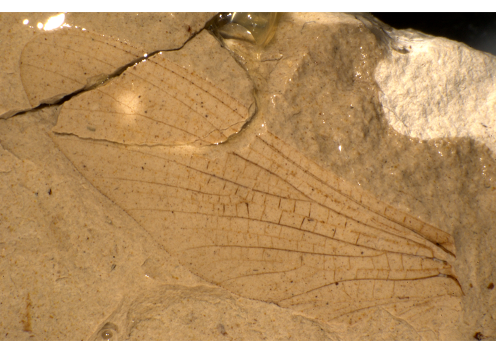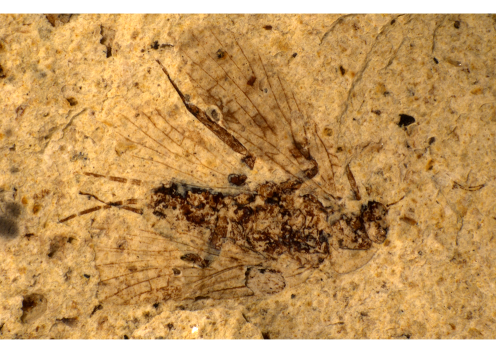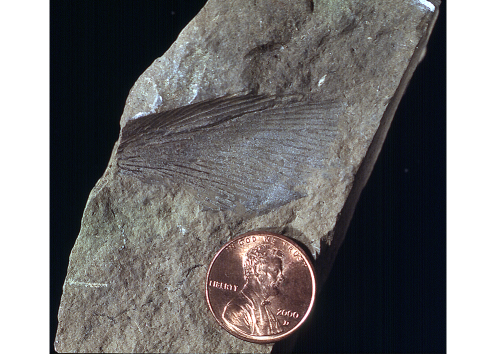Insects Gallery

Dunbaria Fascipennis
This Permian fossil, Dunbaria fascipennis, preserves details of veins and traces of colored bands on its wings. This specimen comes from a fossil insect site near Elmo in Dickinson County. Photo by Michael Engel, KU Ecology and Evolutionary Biology.

Protereisma Permianum
Insect fossils from Elma, such as this Protereisma permianum, were discovered in 1899. The first insect fossils from the Permian Period to be found in the world, they provided important information and filled a gap in the record of insects' evolution.

Lemmatophora
Insects belonging to the genus Lemmatophora are relatively common fossils at the Elmo site. This dime-sized specimen preserves the body, wings, and parts of the legs, antennae, and a segmented appendage called the cerci.

Cockroach Wing
Cockroach wing fragments are somewhat common fossils at the Hamilton quarry site in Greenwood County. These fossils are from the rocks deposited during the late Pennsylvanian Subperiod, about 299 million years ago.